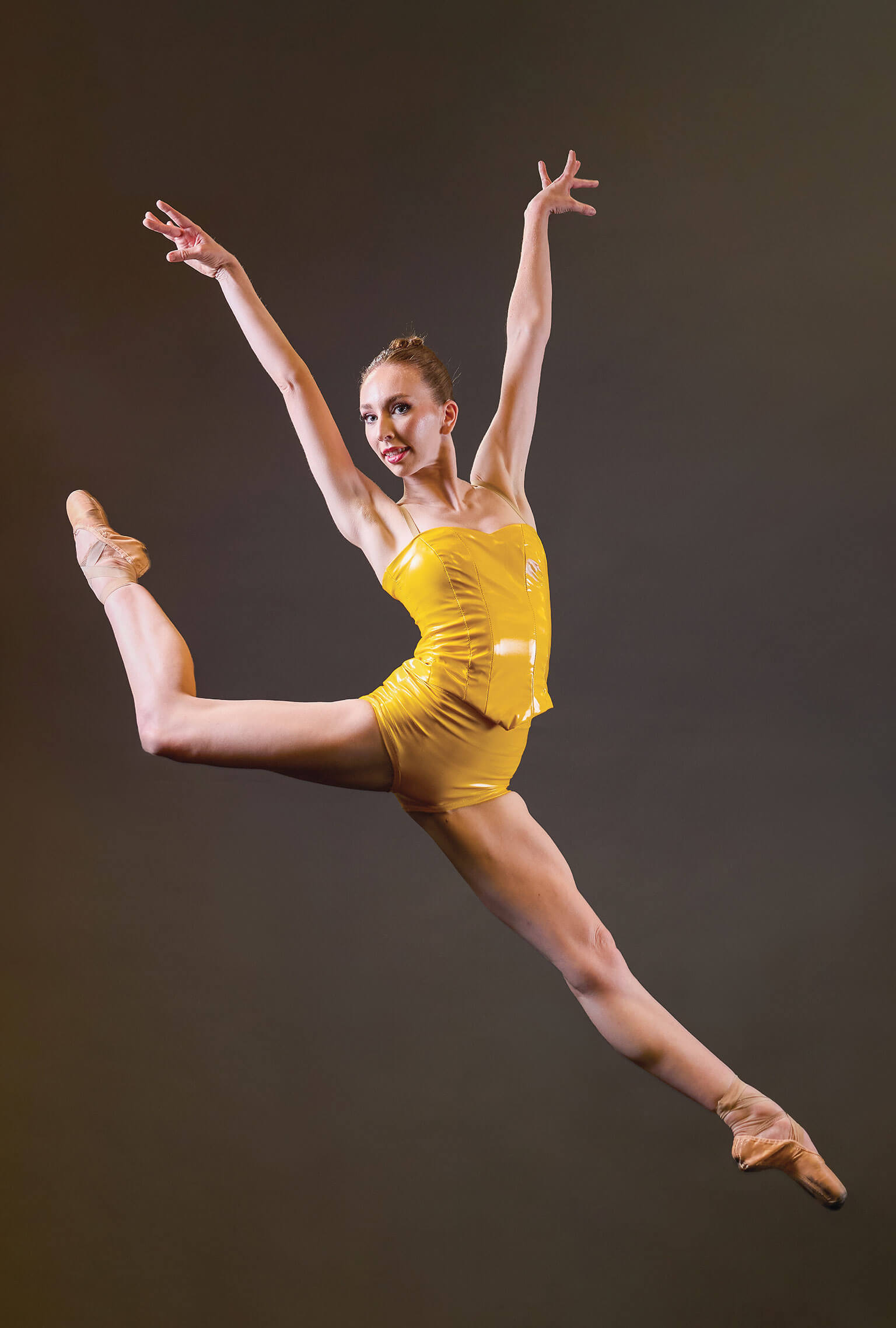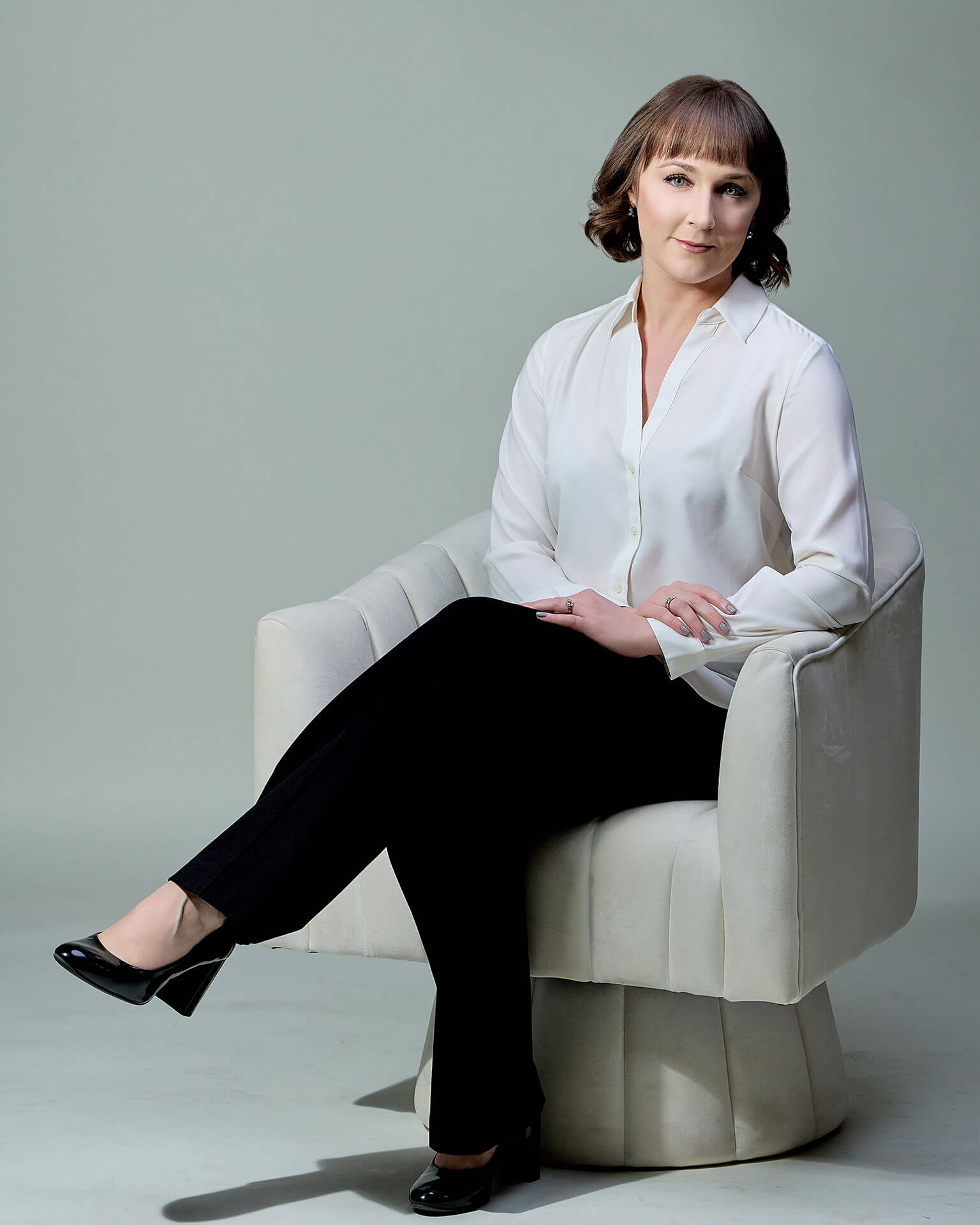In the search for a new executive director, we sought an individual with the skills, aspirations, and passion to elevate both Ballet Tucson itself, as well as the surrounding Tucson community as a whole. Christine Peters aims aligned perfectly with our own, both in terms of implementable goals for the company, as well as the desire to make dance more broadly tangible for every member of our audience. Recently we sat down with her as she shared her own journey, her vision for the future of Ballet Tucson, and what the city means to her.

Executive Director Christine Peters
Please tell us a little about your background and your journey to where you are now.
I am an Arizona native—originally from Mesa. I grew up dancing—and then somewhat fell in love with arts administration during college at Arizona State University, which I have continued to pursue actively that throughout my career. After college I was in DC for a couple of incredible internships—the Bureau of Education at the State Department as well as the office of the First Lady of the White House. Eventually, I moved to Miami and started working in individual giving—first with the Institute of Contemporary Art Miami, and then Miami City Ballet. When I got pregnant with our daughter, my husband and I wanted to move back to Arizona to be a little closer to home. COVID hit and I thought, “This is a great time for me to go back to school—why not balance being a mom and progressing my career?”. So, I got my MBA at the University of Arizona. I remember applying for my first job in NY and that was one of the interview questions: “Where do you want to be in 10 years?”. I said I want to have my MBA. And, ten years later, I did.
What about your relationship to dance? Where did it start? How has it grown and changed over time?
I danced from the age of four—when you wear those fun little fluffy tutus—through college. I knew pretty early on that I was never going to be make it being truly successful dancing, but I had this amazing internship at the Arizona Commission on the Arts in college, and I saw it as my opportunity to pivot. I grew up during So You Think You Can Dance—I did all the competitions. I had a few opportunities with my dance troupe to travel, and one trip in particular to China changed my life. It sparked an interest in me to look deeper at the connections between art and culture and art and society—art as a form of communication. You can see the threads of public diplomacy throughout my career. I wanted to pursue that more on an intellectual level, and it’s led me to wherever the opportunities have been. Originally, I thought I would go into the public sector but I found myself in nonprofit work in Miami and it just kind of stuck. Coming back to more local work—community-based work—I feel at home.
What brought you to Ballet Tucson?
Scrolling! I was on the website, looking at the upcoming season, and I clicked on employment opportunities out of curiosity. They were hiring a new executive director—looking for someone with a masters and experience in ballet, and having come from Miami City Ballet and having just received my MBA I said, “I have got to apply, right?!”.

Dancers Danielle Cesanek and Hunter Solomon
When we moved here originally in 2019, I saw a Steampunk performance and it really stuck in my mind—it was so dramatic. Then this past season I saw the fall concert with the Song Festival—an Édith Piaf work by Cheiko and a Christopher Wheeldon piece. It was wonderful.
Was there a “selling moment” for you in terms of taking the job with Ballet Tucson?
I remember walking into the new studio—studio D—and it was full of stuff. It was being used as storage. You could feel the potential, the momentum. I thought, “I want to be here—I want to help this become something.”

Dancer Sarah Wilkerson
What are your immediate goals for the company?
We’re just now getting into the season, and it’s incredibly exciting coming in and feeling the energy—when people see one another, the music in the background, the people dancing to it. More people should be able to feel that.
Community is so important to me. I want to engage our community in as many ways as possible. From donors to our theater patrons to dancers, I want to have more communication and more opportunities for us to connect and get to know one another. I think it is important to consider the audience as a valuable part of the work. Having the channels between the artist and the art appreciator is incredibly important.
I would love to see that happen through education. There are so many ways for people to get involved in ballet, and it doesn’t have to be through the dance itself. There are layers to it—there’s music, there’s costuming, there’s the production behind the scenes. Opening the doors for our audiences and supporters to come see and experience dance through all these different levels, that would be incredible.
What are your ideas for engaging the local Tucson community around you?
Strategic partnerships. Tucson is such a cool city, and we have so many groundbreaking businesses, people, and artists themselves. By entering into collaborations and figuring out how to highlight what Tucson has to offer, Ballet Tucson is branded as Tucson itself. There’s a sense of ownership with the community over this wonderful organization.
Art is an evolving process. We are so lucky to have the classical works, but we have so much innovation within the ballet world right now, such as Justin Peck, who we’ll see later in the season. There are opportunities to engage all sorts of different groups within the larger Tucson community by offering different types of work and a highly diverse season.

Artistic Director Margaret Mullin
How would you define your role within the company, and your relationship with artistic director, Margaret Mullin?
I see my role as supporting Margaret’s artistic vision. Developing the channels, as well as the infrastructure to fund those channels to the appropriate designations is how I see myself supporting her. We’re very much partners—we meet frequently and already have had multiple conversations regarding being as transparent as possible with one another, through that we can foster a solid working relationship.
If you were to pick one “bucket-list” thing for the next ten years for Ballet Tucson, what would it be? What are you most excited about?
I want Ballet Tucson to be able to showcase great works— works—my personal all-time favorite ballet is Concerto DSCH, by Alexei Ratmansky. I’d love to see it on our stage. But more generally, bringing high quality and cutting-edge performances, as well as the classics, to Southern Arizona is the main goal for all of us here. I would love for this company to be a cultural destination. The city of Tucson within itself is one of the most beautiful destinations—it’s why my husband and I stayed. We, as an organization, are just part of this much larger community, so being able to be part of one of the many draws into our city is my aspiration.
What are some of your own personal Tucson loves and spots?
The mountains are beautiful—the Catalina Mountains are just breathtaking. I am a runner, so going to Sabino Canyon and doing hills there—especially if you get there at sunrise—there’s nothing like it. I love the Arizona wine community too. It’s growing; it has so much energy in this part of Arizona right now—again, I love fostering and celebrating the local. And, probably our favorite restaurant right now, is Tito & Pep!
Interview by nationally recognized dance writer Emma Love Suddarth.
Photos by Carlos Chavez.
Featured Ballet Tucson dancers: Sarah Wilkerson, Danielle Cesanek and Hunter Solomon